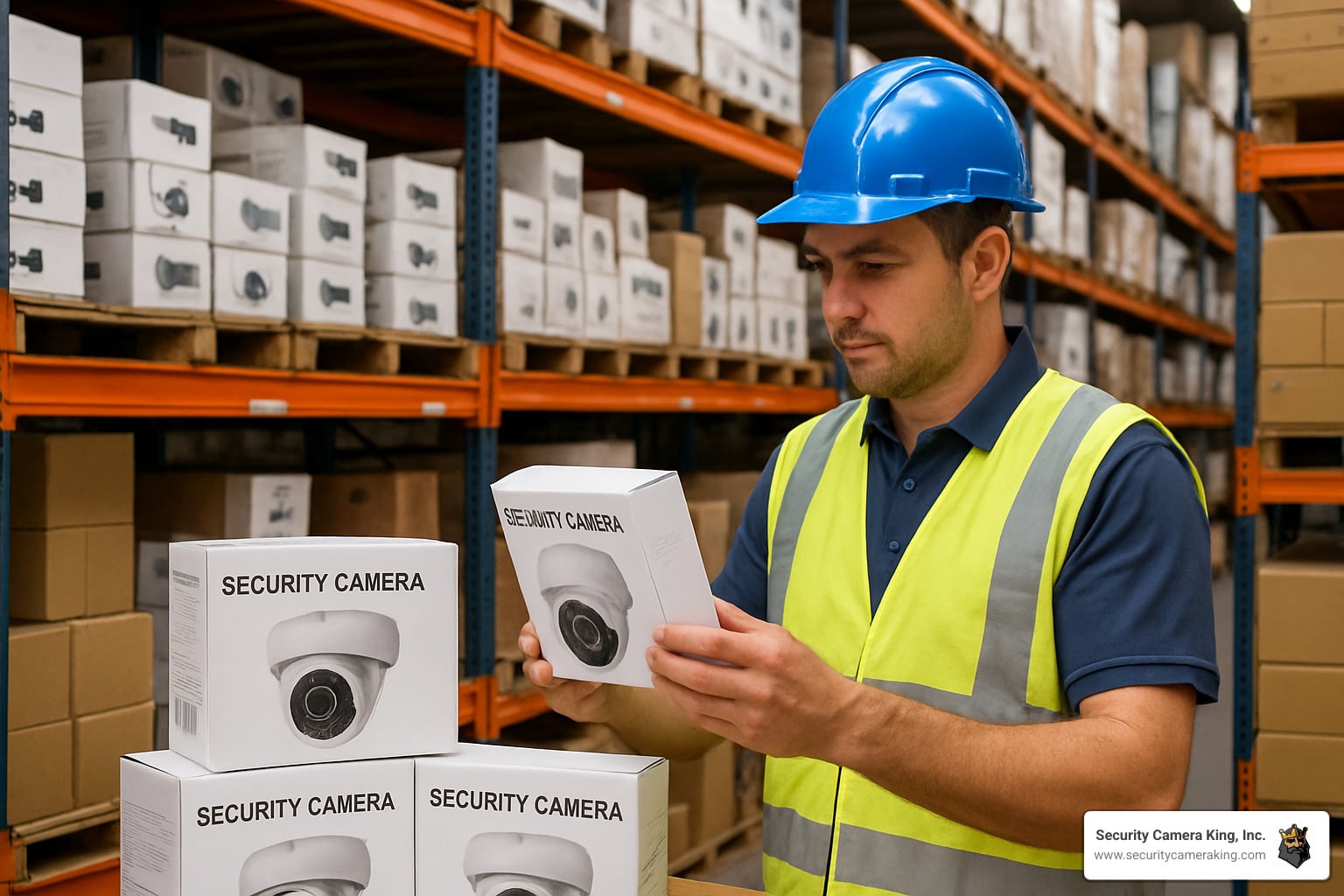
Understanding the basics of IP surveillance systems and how they function can help you make an informed decision about which system is best for you. These surveillance systems are able to provide innovative functions for consumers and increase the security of their properties. IP-based video surveillance does not suffer from the limitations of analog video surveillance systems. Even experts have difficulty understanding the new technology due to its constantly evolving nature. For any questions regarding the best IP Security Cameras company give Security Camera King a call at 561.288.5258.
While the details of network IP surveillance are open to interpretation, there are important points consumers need to consider. These details will help you decide if network IP surveillance cameras are right for you.
This article will explain how IP-based video surveillance works and how they differ from analog systems. It will also highlight the benefits of an IP surveillance system. Let’s first look at how modern video surveillance has evolved and how network IP security cameras can fit in.
An analog video surveillance system was first developed using closed-circuit television systems (CCTV). The system required that everything be wired in, and could record all video feeds on tapes.
These systems had a few drawbacks, including poor resolution and low scalability (how easy you can add more cameras), as well as the inability to broadcast live video feeds. Remote monitoring, which allows you to view a live feed from a remote location, was not possible.
Video surveillance technology has made amazing leaps and bounds over the past two decades. Digital cameras have become much more affordable over the years. The technology was also made more accessible by the replacement of analog tubes with charged coupled devices (CCD).
High-resolution video feeds can now be viewed live by consumers over the internet. With advanced analytics software and innovative tracking features, this opened up new possibilities.
A digital camera is used to capture video images. The digital information is then converted into digital information and sent over an IP surveillance system. The information sent over the LAN to a computer or server is then consolidated.
The software in the server or computer manages digital video feeds. It allows users to view, record, and send them. There are many options for software, and users can choose to upgrade it to unlock more useful functions like the ability to analyze details within an image.
IP surveillance systems use network security cameras to send video feeds over the LAN. This is usually done using a CAT5 cable, rather than a coaxial.
This method consumes a lot more bandwidth than TCP/IP communication. This method is more efficient for data retrieval and intelligent data mining, which is the process of sifting through digital information. This technology can be used by consumers to create encryption features that protect images from being altered.
Comparing IP surveillance systems to analog systems is a great way to learn how they work. Although CCTV/DVR surveillance is easier than VCR, there are many limitations.
These systems have a low-quality video system, which is their most obvious limitation. An analog video surveillance system makes it difficult to track and search. As mentioned previously, you must add security cameras in blocks of 16 channels.
Storage tapes in older analog systems can deteriorate over time, making storage more difficult. Although these older systems are more affordable, their limitations render them ineffective.
The network IP surveillance system solves virtually all problems that were present in analog systems. It is much easier to add IP surveillance cameras to existing systems as the user requires. This is possible without the need to physically add new cameras or bulky cables.
IP-based surveillance systems allow users to easily transmit video feeds to any location. This allows them to monitor multiple feeds from a remote location. The high quality of these video images is not affected by the transmission. This image quality is far superior to analog surveillance systems.
Standardization has been made in the compression of standard IP video information to make it universally usable. IP surveillance systems have adjustable framerates. All digital video feeds can be stored easily and encrypted if required.
IP video surveillance offers many benefits that are far superior to analog surveillance systems. These are just a few of the many benefits.
An IP surveillance system can provide you with peace of mind by utilizing cutting-edge technology. IP security cameras can be used to protect residential or commercial properties.
Easy to connect, network IP security cameras can be used to monitor any wireless adapter or network. These cameras have high-resolution video feeds that allow details to be easily seen in real-time.
These cameras also offer amazing capabilities and functions. Software used in IP surveillance systems can be easily modified and updated. Software is available that allows you to track, facial recognition, license plate identification, and many other features.
This technology is easily upgradeable, stable, and reliable making it an extremely effective security solution. Each year, new developments in surveillance technology will make analog surveillance systems increasingly obsolete.
When this is considered, the choice between analog and IP-based surveillance systems becomes clear. Contact our team if you need more information about how to choose a security cam system.

Copyright © 2014-2025 SecurityCameraKing.com, All rights reserved
Privacy Policy | Shipping Info | Return Policy | Terms & Conditions